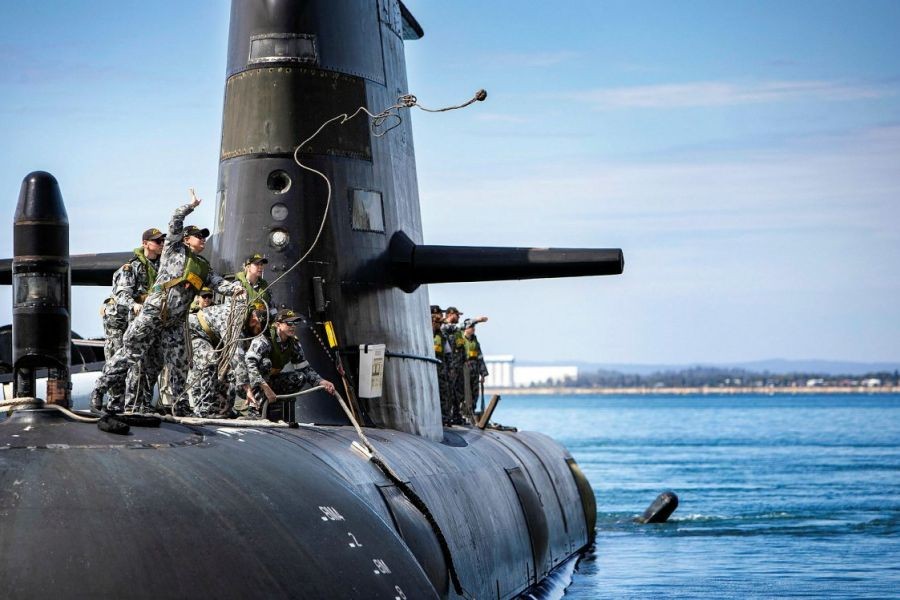Australia's submarine program has been a topic of considerable debate and interest, not just within national borders but also on the international stage. This program, aimed at rejuvenating Australia's naval capabilities, involves significant strategic and economic considerations. However, beneath its surface lies a myriad of hidden problems that could impact Australia's defense strategy and economic stability.
How It Works: A Deep Dive into Australia's Submarine Program
The Australian government embarked on a journey to replace its aging Collins-class submarines, aiming to strengthen its maritime security. The procurement of new submarines is part of a broader defense strategy, aligning with Australia's geopolitical interests in the Asia-Pacific region. The program includes building a fleet of advanced submarines with cutting-edge technology to ensure Australia remains a formidable maritime power.
The project, however, has been marred by delays and budget overruns. Originally estimated at AUD 50 billion, it has now ballooned to potentially over AUD 90 billion, according to the Australian Strategic Policy Institute (ASPI). These cost overruns have raised concerns about financial management and the project's impact on taxpayers.
Economic Implications: A Strain on Australia's Budget
The submarine program's financial strain is not just a concern for defense spending but also for the broader Australian economy. As outlined by the Treasury AU, a significant portion of the national budget is now allocated to defense, potentially diverting funds from crucial sectors such as healthcare and education. Furthermore, the commitment to this program could affect Australia's credit rating if not managed prudently.
While defense spending can stimulate local industries, the potential for cost overruns and delays poses a risk to economic stability. The Reserve Bank of Australia (RBA) warns that prolonged fiscal strain could lead to inflationary pressures, impacting the country's economic growth trajectory.
Pros and Cons Evaluation
Pros
- Strategic Advantage: Enhances Australia's maritime security and geopolitical influence in the Asia-Pacific region.
- Technological Advancement: Promotes innovation and technological development within the defense sector.
- Job Creation: Expected to create thousands of jobs, benefiting local economies and the Australian workforce.
Cons
- Financial Risk: Budget overruns could strain national finances, affecting other critical public sectors.
- Delays and Inefficiencies: Prolonged timelines could undermine strategic objectives and lead to operational inefficiencies.
- Opportunity Cost: Resources allocated to submarines may detract from other defense and public welfare priorities.
Case Study: The Collins-Class Submarine Experience
Australia's previous venture with the Collins-class submarines offers a cautionary tale. Initially celebrated for their advanced capabilities, these submarines faced significant operational challenges, including mechanical failures and crew shortages. The lessons learned from the Collins-class experience highlight the need for rigorous project management and realistic expectations.
Problem: The Collins-class submarines struggled with persistent technical issues, leading to reduced operational readiness. The Australian Defense Force reported that only two out of the six submarines were operational at any given time.
Action: To address these issues, Australia invested in extensive upgrades and maintenance programs. The government also sought international expertise to enhance technical capabilities and crew training.
Result: While these measures improved operational efficiency, the program still faced criticism for its high costs and prolonged timelines.
Takeaway: The Collins-class experience underscores the importance of realistic planning and effective project management in defense procurements.
Common Myths & Mistakes
Myth: "More spending automatically leads to better defense capabilities." Reality: Effective defense requires strategic spending, not just increased budgets. Overspending without clear objectives can lead to inefficiencies.
Myth: "Submarine programs are always on schedule." Reality: Historical data from multiple countries shows that submarine programs frequently encounter delays, which can extend timelines by several years.
Myth: "Upgraded technology solves all operational issues." Reality: While technology is crucial, human factors like training and management are equally important for operational success.
People Also Ask (FAQ)
How does Australia's submarine program impact the economy? The program has significant economic implications, potentially straining the national budget and affecting sectors like healthcare and education. However, it also promises job creation and technological advancement.
What are the biggest misconceptions about submarine procurement? A common myth is that increased spending ensures better defense capabilities. In reality, strategic and efficient management is crucial to achieving desired outcomes.
What are the best strategies for managing defense projects? Experts recommend adopting robust project management frameworks, continuous oversight, and regular audits to ensure projects remain on track and within budget.
Future Trends & Predictions
Looking ahead, the global landscape of defense procurement is shifting towards more flexible and adaptable strategies, as noted by Deloitte's 2024 Global Defense Outlook. Australia will need to embrace these trends, focusing on modular and scalable solutions that can adapt to rapidly changing technological and geopolitical environments.
Conclusion
The hidden problems within Australia's submarine program underscore the complexities of managing large-scale defense projects. While the program promises strategic advantages, it also presents significant economic and operational challenges. Moving forward, Australia must prioritize effective management and realistic planning to ensure the submarine program meets its strategic objectives without compromising economic stability. What's your perspective on Australia's approach to defense spending? Share your insights below!
Related Search Queries
- Australia submarine program challenges
- Economic impact of defense spending in Australia
- Collins-class submarine issues
- Future of Australia's naval defense
- Submarine procurement strategies
- Geopolitical implications of Australia's defense strategy
- Defense project management best practices
- Australia's defense budget analysis
- Technological advancements in submarine design
- Asia-Pacific maritime security trends
































RogerFelts
8 months ago